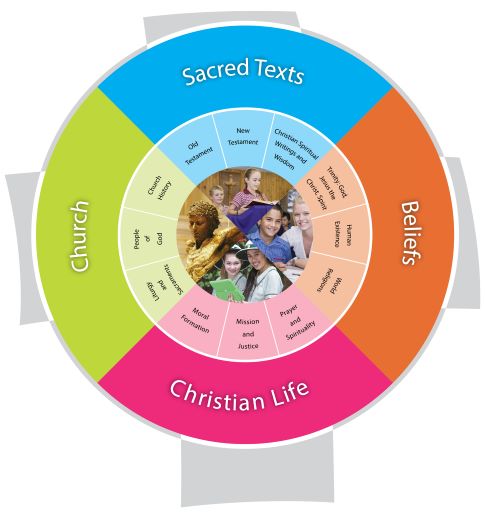Religion Curriculum
The second dimension of Religious Education is the teaching of Religion. It is structured using the Religion Curriculum P-12, Archdiocese of Brisbane. Teachers use a range of strategies and resources to engage the students with the content of the Curriculum.
Catholic schools have extra time allocated for the teaching of Religion. This is 2.5 hours per week in addition to the time allocated to other learning areas which is similar to government schools.
At Guardian Angels' we educate all students to live the gospel of Jesus Christ. We plan learning experiences that provide opportunities for our learners to be successful, creative, confident, active and informed learners empowered to shape and enrich our world. Inquiry learning cycles incorporate components of the Curriculum, organised under content strands: Sacred Texts, Beliefs, Church and Christian Life.
- Sacred Texts - This strand explores the ongoing loving relationship of God with all of creation. Students are challenged to see that they are a part of this story by deepening their awareness of these sacred texts and discovering how they provide inspiration, guidance and strength for their own lives.
- Church - This strand explores the Church as both human community and spiritual community, past and present, and how the Church is called and challenged to express the continuing presence of Jesus Christ in the world.
- Beliefs - This strand explores foundational Catholic Christian beliefs and teachings and how these have found expression over time. Other major religions are also explored.
- Christian Life - This strand explores the foundations for Christian moral living, how this is expressed through action for justice, and ways in which morality supports the lives of believers. Students are challenged to make life giving choices for themselves and others and to respectfully participate in a variety of prayer experiences (2013).

© Brisbane Catholic Education (2023)
These strands are interrelated, taught in an integrated way, and in ways that are appropriate to specific local contexts. This delivers a meeting of culture and faith, which happens through the person, and can be seen in the classroom and school grounds. Our Religion Program is currently being reviewed and will be added here when the review is complete.
Scope and Sequence
Religious Education Curriculum reveals some insight into the distinct but complementary objectives of teaching religion and teaching people to be religious in a particular way. These aims are expressed in the explicit teaching and learning and the spiritual and liturgical experiences that are interwoven throughout the Religious Education curriculum. At Guardian Angels' the implementation of effective pedagogical tools, methods and frameworks are central to the delivery of Religious Education. Teachers are equipped with a repertoire of pedagogical strategies that meet the developmental and learning needs of all students. Prep to Year 6 have developed an inclusive scope and sequence of curriculum implementation that ensure rich Religious Education experiences. These collaboratively developed Scope and Sequences detail each year level's:
- Achievement Standard
- Deep learning
- Surface Learning
- Content Descriptions
- Core Texts and Complementary Texts
- Explicit Prayers
- Religious Life of the School connections.